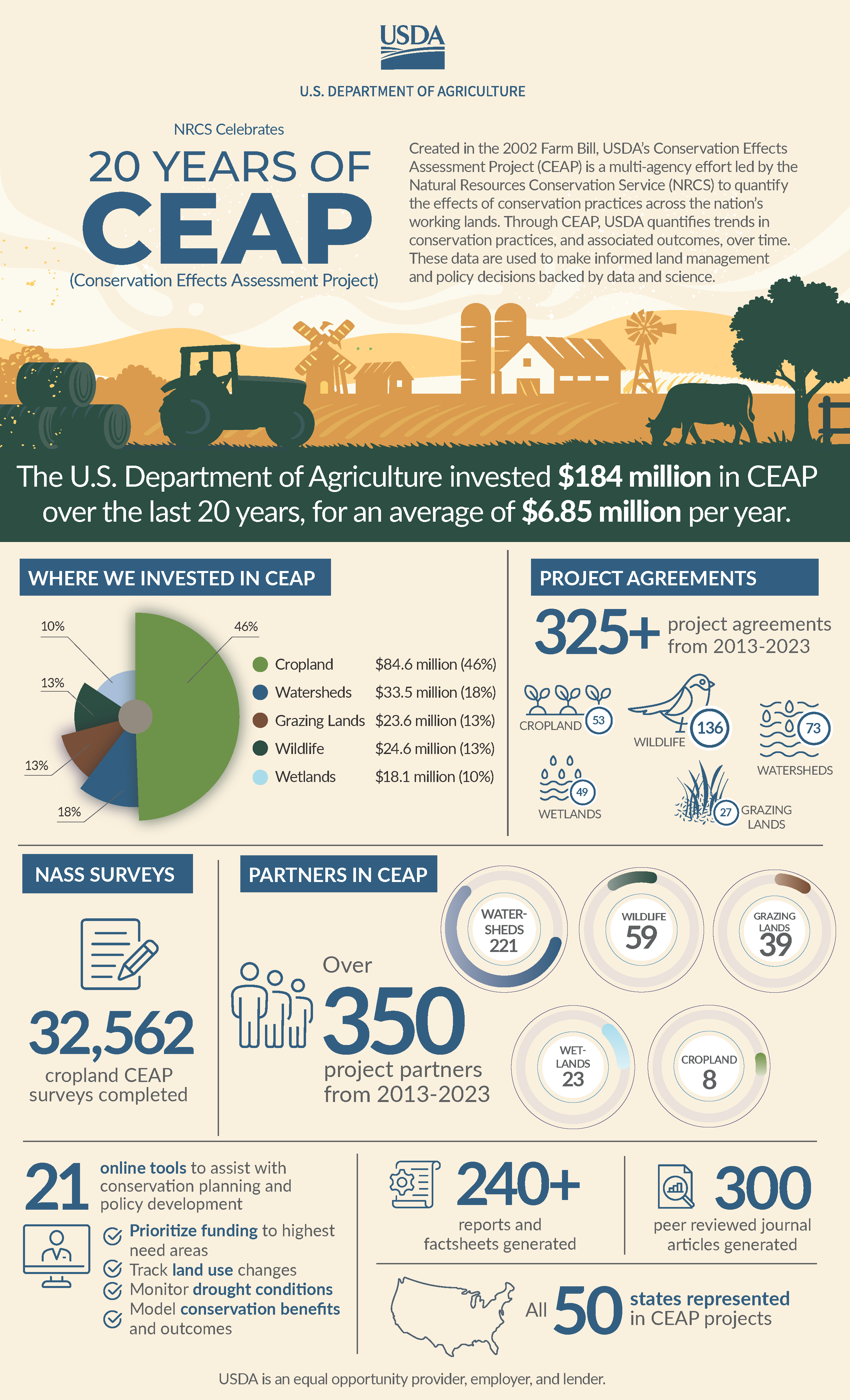Each day U.S. farmers and ranchers make thousands of management decisions, ranging from when and what to plant to weighing options for conserving their operation’s natural resources. They depend on an array of experts, research and data to inform these decisions. One of their sources is the Natural Resources Conservation Service (NRCS), USDA’s primary private lands conservation agency.
NRCS generates, manages, and shares the data, technology, and standards that inform conservation decisions by farmers and ranchers, policy makers and others. Many of these data are generated through co-produced science, delivered by the NRCS-led Conservation Effects Assessment Project (CEAP). CEAP assessments are carried out at national, regional, and watershed scales for conservation efforts related to cropland, grazing land, wetlands, and wildlife.
First funded through the 2002 Farm Bill, CEAP quantifies and reports on trends in voluntary conservation practices, and associated outcomes, over time. CEAP findings help guide conservation program policies and support conservationists, farmers, and partners in making informed management decisions backed by data and science.
For example, CEAP co-produced science has supported:
- Conservation strategies leading to landowners protecting and enhancing nearly 10 million acres of sage grouse biome habitat in the western U.S.
- Ongoing work to better understand how conservation practices can improve water quality and impacts on local streams.
- A refined NRCS focus on nutrient management to better protect water quality and ag operation’s finances, after a CEAP report revealed national increases in subsurface nitrogen and soluble phosphorus lost to the environment.
- A web-based tool helping land managers and ranchers address rangeland soil erosion caused by water.
- An increased regional understanding of the benefits provided by natural and restored wetlands and tools to assist smart management of wetlands that are part of ag landscapes.
- Tools to help conservation planners and other NRCS staff prioritize areas for conservation practices and funding within a farm, watershed, state, or region.
The infographic below helps illustrate the scope and impacts of the past 20 years of CEAP. You can find out more by visiting www.nrcs.usda.gov/ceap.

